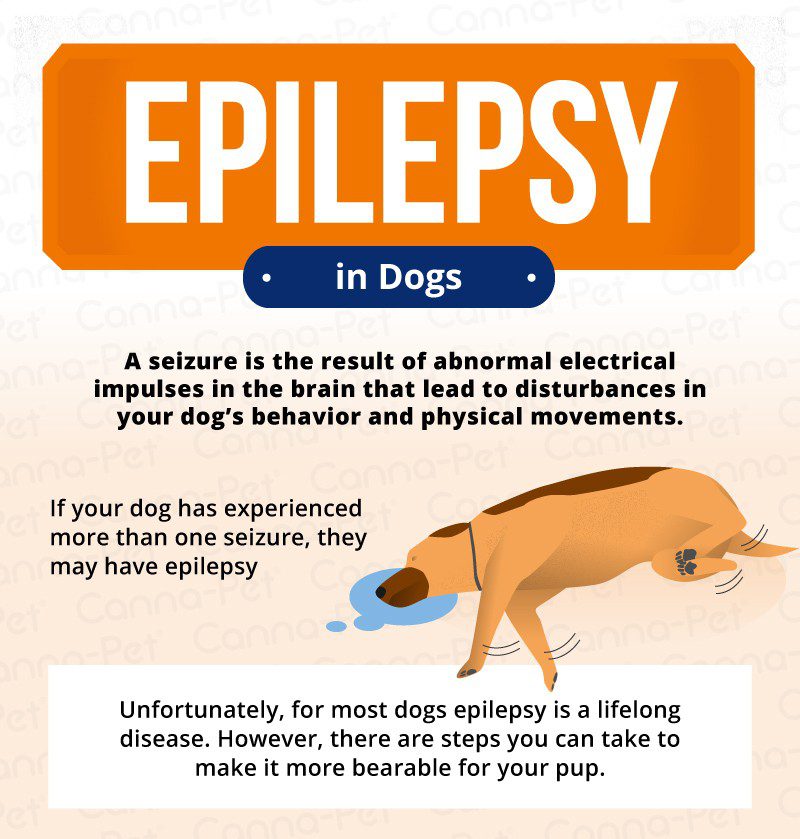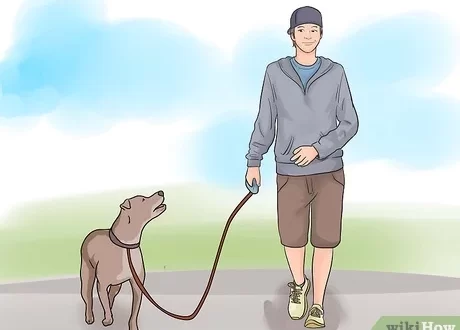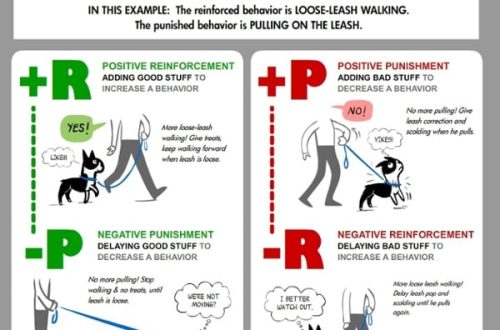
Epilepsy in dogs – causes, symptoms, treatment of seizures
Contents
Types of epilepsy in dogs
Depending on the nature of epilepsy, there are two types of epilepsy.
- Idiopathic (primary, congenital, genetic). It develops in dogs with a genetic predisposition. Animals of any breed can get sick, but most often epileptic seizures are noted in a poodle, golden retriever, dachshund. The disease usually manifests itself before the age of one year, but may be later – depending on the condition of the dog, living conditions and other factors. Idiopathic epilepsy manifests itself in different ways, with varying frequency and severity of symptoms. Characteristically, over time, seizures become more frequent and more severe, which can ultimately lead to the death of the dog.
- Structural (secondary). This type of epilepsy in dogs develops against the background of diseases, disorders in the body, that is, under the influence of any negative factors. Mostly adult dogs with deviations in health get sick.
Causes of epilepsy in dogs
If in the case of idiopathic epilepsy the cause is heredity, then in the case of secondary factors that provoke pathology, there are many. The disease can be the result of:
- severe poisoning;
- traumatic brain injury;
- insufficiency of the liver, kidneys;
- violations of the hormonal background, metabolic processes;
- neoplasms in the brain, hydrocephalus;
- serious intoxication, for example, with helminthiases, after infections (encephalitis, distemper), with bites of poisonous insects, snakes;
- a diet poor in magnesium and potassium;
- low blood glucose;
- heart disease.
As a rule, the onset of the disease is influenced by several factors at once, for example, poor nutrition, heart problems and stress.
Features of attacks
Epilepsy in dogs occurs in different ways, so sometimes the owner may not notice the problem or associate it with another disease.
- Absence. Small epileptic seizure, or non-motor seizure. It goes unnoticed. The animal freezes for a few seconds, while spasms of muscle tissue are absent. A look can give out a disease – motionless, meaningless.
- Partial epileptic seizure. Convulsive contraction of certain muscles, for example, in the back.
- General, or generalized. It proceeds in two stages. First, for a minute, the muscles on the dog’s limbs spasm (at this moment she is unconscious), they become as if paralyzed. Then there is a contraction of the muscles of different groups – on the muzzle, paws, and so on. Bowel or bladder emptying may occur.
- Behavioral or partial seizure. In this case, the changes relate to the behavior of the animal. The pet can whine, howl, hide, “grind” his teeth, smack his lips. Perhaps the appearance of aggression, loss of orientation in space, profuse salivation (the owner may suspect rabies).
If different forms are observed, an epileptic attack is called mixed, and with several seizures following one after another within a short period of time, it is called multiple.
Epilepsy Symptoms in Dogs
How does epilepsy manifest in dogs? The severity of symptoms depends on the strength of the provoking factor, the duration of the disease, the characteristics of the animal’s body, and so on. Among the most characteristic are:
- muscle contractions;
- lack of consciousness;
- excretion of urine or feces at the time of convulsions;
- salivation;
- changes in behavior (described above);
- heavy breathing or its absence for several seconds;
- temporary blindness after a severe attack.
The pupils of the pet may be dilated, and the eyes rolled up, half-closed or bulging. With a prolonged seizure (more than 30 minutes), the dog’s consciousness may not recover, which is a life-threatening sign.
Diagnosis of the disease
Epileptic convulsions, changes in behavior, loss of consciousness – these and other symptoms may be evidence of another disease, therefore, having noticed unusual phenomena in a pet, you should immediately contact a veterinarian.
To diagnose epilepsy in dogs, a specialist will prescribe a number of studies:
- blood test – general and biochemical;
- electroencephalography – determines the frequency of electrical impulses in different parts of the brain;
- x-ray of the head – determines injuries of the skull, brain, hematomas, neoplasms;
- ECG;
- CT or MRI of the brain – shows inflammatory foci, circulatory disorders and other pathologies.
The owner needs to describe in detail the features of the attacks: time, duration, manifestations, intensity. Be sure to inform the doctor about injuries or infectious diseases of the pet in the past, tell about the conditions of detention, the characteristics of the dog’s character. Of great importance are data on the pedigree of the animal.
Epilepsy treatment
Genetically determined epilepsy in dogs cannot be cured, but therapy prescribed by a veterinarian can facilitate and prolong the life of the animal. The secondary form cannot be completely cured either, but there are cases when the elimination of its cause leads to a complete cessation of seizures.
Medication Therapy
It is impossible to treat a dog on its own, even if it had cases of epilepsy in its pedigree – some of the drugs can be dangerous in other pathologies. Drugs are prescribed only by a doctor, based on the results of the examination. Often the prescribed medication does not help or is not suitable at all due to side effects, then the specialist prescribes another remedy. You need to be prepared for the fact that antiepileptic therapy will become not only a long process of selecting the optimal drug, but also an indefinite one – the pet will have to be treated until the end of his life.
Drug therapy for epilepsy in dogs is aimed at reducing the excitability of brain neurons, improving blood flow, reducing the frequency and duration of seizures. Anticonvulsants have serious side effects, and if the dog behaves unnaturally (there are depression, apathy, drowsiness, problems with the gastrointestinal tract), you need to tell the doctor about it.
It is important to give drugs in strict accordance with the prescribed dosage and schedule. As a rule, at first the medicine is given in a smaller dose, and then it is increased to the optimal one. During treatment, the pet must be observed. It is believed that the therapy is successful, and the medicine is chosen correctly if an epileptic attack does not occur for about a year.
Non-drug treatment
In addition to medicines, a specialist can prescribe acupuncture sessions. It has been scientifically proven that the impact on the main sensitive points has a positive effect on the nervous system of the dog and reduces epileptic manifestations. Moreover, not only therapeutic, but also preventive effect is noted. Acupuncture is an excellent addition to medical treatment – the pet’s condition improves faster.
Do you need a diet?
Dietary changes are an important part of epilepsy therapy. Particular attention is paid to the introduction of foods rich in potassium, magnesium, and B vitamins into the diet. A diet that includes offal, vegetables, and greens is recommended. If the pet is on industrial feed, it is advisable to transfer it to natural food or choose a special line for animals with neurological diseases.
How to alleviate the condition at home
If a dog has been diagnosed with epilepsy, it needs to provide appropriate living conditions. Be sure to exclude stress, since nervous tension has a particularly strong effect on the severity of the attack. You can not offend, unnecessarily scold the animal, on the contrary, you need to show maximum attention and love. The same applies to physical activity: the pet should breathe fresh air, play with other animals, but it is better to take him out often and not for long.
If you do not have the opportunity to constantly be near the dog, be sure to take measures to limit its movement. During an attack, a pet can injure itself, so remove dangerous objects from its environment in advance. In extreme cases, you can make a fence.
What to do during an epileptic seizure in a dog
An epileptic seizure is a great physical load on the body of an animal. At home, during a seizure, you should not try to move the dog to a “comfortable” place, just put your hand, a folded towel or a flat pillow under her head so that the head is slightly higher than the torso.
If there are dangerous objects nearby, such as the corners of furniture, you need to move the pet (or object) to a safe distance. At the same time, be sure to remain calm: do not make noise, do not panic, talk quietly, referring to the dog by name. In some cases, this is enough to stop the further development of the seizure.
It is important that the animal lies on its side and the airways are clear. In this position and with the head raised, the likelihood of choking on vomit or saliva is minimal. By the way, the retraction of the tongue with subsequent strangulation does not occur in this case, so there is no need to try to open the mouth. Also, you should not give medicine during an attack – due to impaired swallowing function, the drug can enter the respiratory tract. As an option – make an injection, put a rectal suppository.
At the same time, you can apply a moistened cloth to the limbs and inguinal region of the dog. This will slightly lower the body temperature, which usually rises during an attack. If the condition of the animal is severe, the seizure lasts more than 10 minutes, you need to take the pet to the clinic or call the veterinarian at home.
At the end of an epileptic attack, the animal may behave inappropriately: show aggression, hide, not recognize the owner or the environment, stumble upon surrounding objects. The dog must be left alone, not laid down, not forced to drink or eat, not to scold, not to impose your presence. If you have other pets, it is recommended to isolate them.
Be sure to record the time when the attack began and ended. The dates of the onset of seizures should also be recorded. An analysis of the dynamics will allow the doctor to choose an adequate treatment or make adjustments to an existing scheme.
Is a dog with epilepsy dangerous to humans or not?
An animal suffering from epilepsy does not pose a danger to humans. If there are manifestations of aggression during an attack, after it ends, the aggressiveness also disappears. Basically, it is associated with the pain experienced by the dog. After an epileptic seizure, the pet is exhausted.
Can a pet die from epilepsy?
A lethal outcome in epilepsy in a dog can occur due to an acute lack of oxygen. Since spasms affect not only the muscles of the limbs, but also the respiratory organs, the flow of air is sharply reduced. In addition, during an attack, the pet loses its orientation in space: it can fall off the sofa, hit the corner of furniture, stumble on something sharp or turn a heavy object over. In some cases, injury can lead to the death of the animal.
Another option in which a dog can die is a weakened immune system, physical and mental exhaustion. This is possible in the absence of treatment. Over time, epileptic seizures become more frequent, severe, and prolonged. Each new seizure takes away another part of the pet’s health. As a result, the animal can not stand it and dies.
Prognosis of the disease
How long do dogs with epilepsy live? There is no single answer. It all depends on the stage at which the diagnosis was made, what caused the disease, the state of the body, nutrition, living conditions, treatment and many other factors. Sometimes the owners, having heard the diagnosis, make decisions about euthanasia. Others, on the contrary, try to support the pet in every possible way: they select medicines, regularly visit the clinic, provide proper nutrition and regimen, surround them with care and warmth. Such dogs live longer, and remain faithful and grateful friends until the end of their lives.





